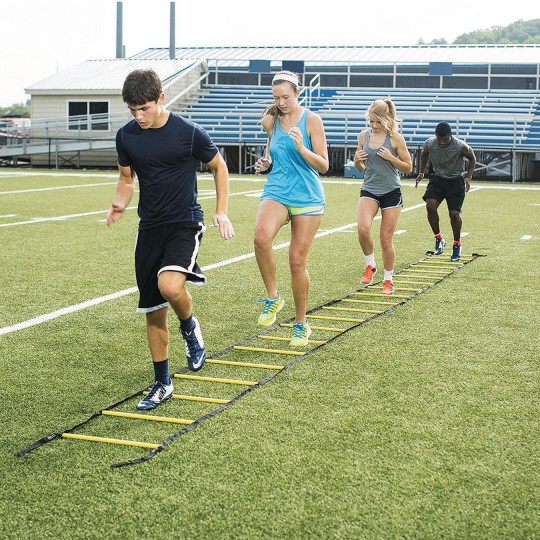
Exercise V. Training – Athletes Must Understand the Difference
There’s an old motto in the world of athletics “the best type of ability is availability”. High school athlete’s account for an estimated 2 million injuries and 500,000 doctors visits every year. According to the CDC, more than half of all sport-related injuries are preventable. So what’s the real issue here? If you ask me, based on observation and talking to young athletes, they’re either not putting enough effort into taking care of their bodies or they’re getting training advice from a friend or a sport coach who isn’t qualified to strength train an athlete.
Many young athletes convince themselves they’re in tip-top shape just because they have a gym membership and lift weights, but the workouts that they’re doing often don’t improve performance. Many fall victim to the ‘mirror workout’ routine. You know the one. You get to the gym and take a look into the mirror and only train what you see like the muscles of the anterior chain (pecs and biceps) all while neglecting the posterior chain creating major imbalances in the process.
It’s imperative for me to explain to my athletes early on that we do not train like bodybuilders; we train to move efficiently in order to improve athletic performance and reduce the risk for injury. When programming for young athletes there are numerous components to consider that only an educated specialist knows how to piece into a program. Neuromuscular efficiency, single leg balance, core strength, joint range of motion, acceleration, deceleration, landing mechanics, change of direction, speed and agility, power and explosiveness, plyometrics, muscular strength, muscular endurance, anaerobic capacity and aerobic capacity just to name a few.
Last winter I had the pleasure of training a High School football team in our facility. I love to coach this age group because it’s an opportunity to show them that they need to train more than they realize. On day one I conducted an experiment and the end result was mind-boggling. Planking is a tool I often use to assess an athletes ability to brace their core. I asked the team if they’ve ever done planks and they all nodded their heads yes. When I asked where and when they were taught how to plank I heard mixed responses. “We do them in Phys Ed, I watch YouTube workout videos, nobody ever taught me.” So without giving any form tips I instructed them to “drop to your forearms and hold a plank.” What I saw was alarming. Just about everyone showed anterior pelvic tilt, a piked up hip, lack of glute activation, no abdominal bracing whatsoever or some combination of these faults.
The primary role of the core is to stabilize the spine and protect against unwanted movement. I reminded them that the sport they’re playing is a very physically demanding contact sport. There I was in the gym full of football players who struggled to hold a simple plank. The same kids who were just asking me when we’d test 1-Rep Max squats and deadlifts didn’t know how to hold a plank. I knew I had my work cut out for me, but I was ready to do my best to help them not only get better, but to educate them as well. This was my time to communicate the difference between exercise and training.
The game is fast I explained, how do you think your bodies will hold up when you get blindsided in a game? Athletes need to be resilient. Training can get you there, basic exercise will not. You can spend your off-season doing push-ups, sit-ups, bicep curls and going for that occasional jog around the neighborhood and convince yourself you trained in the off-season. But that’s exercise not training, and you need to know the difference.
Author: Michael LeFebvre – B.S / C.S.C.S
Michael has been a strength coach at Olympia Fitness and Performance for three years. Michael graduated from Rhode Island College where he studied Community Health & Wellness with a concentration in Wellness & Movement studies. After graduating, Mike went on to get his CSCS (certified strength and conditioning specialist) through the NSCA. In his three years as a strength coach, Mike has helped clients from all walks of life improve their fitness levels. He has a strong passion for helping young athletes not just improve their athletic performance, but also helping them build confidence.

